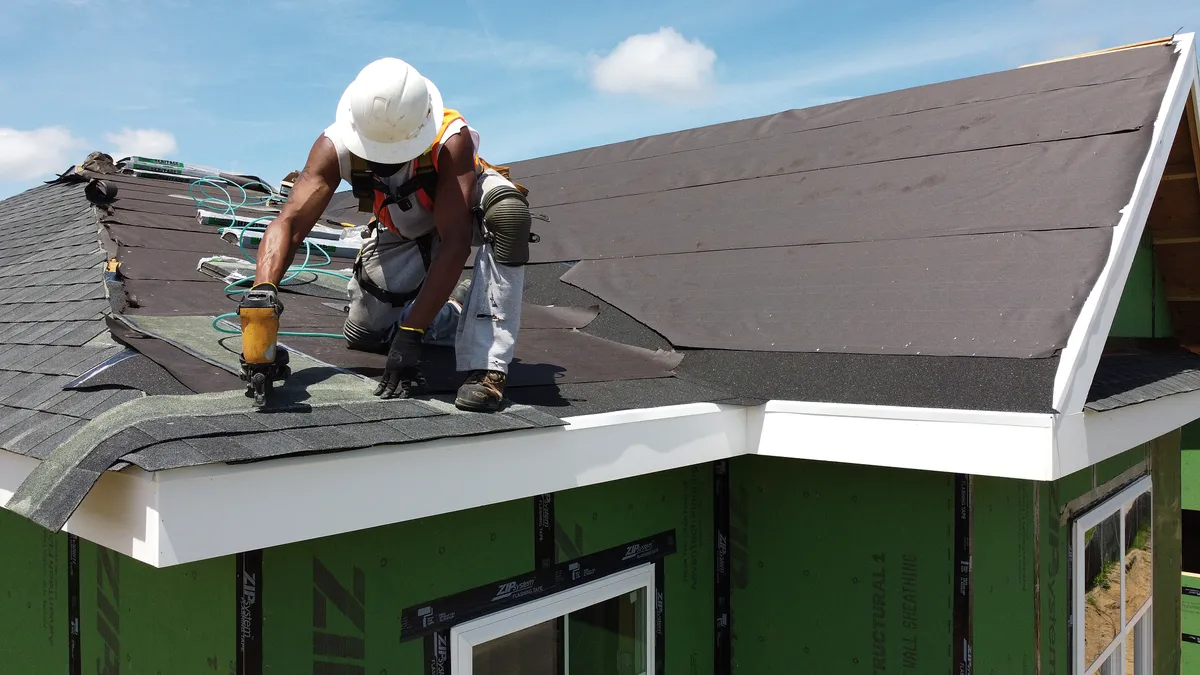Dive Brief:
- Falling home construction and sales — along with waning demand for mortgages and slumping homebuilder confidence — underscore how the rapid withdrawal of stimulus by the Federal Reserve has jarred interest-rate-sensitive sectors of the economy and pushed the housing market deeper into recession.
- Building permits for single-family homes fell 3.5% last month compared with July, and 15.3% compared with August 2021, the Census Bureau said Tuesday. Homebuilder confidence in September fell for the ninth straight month amid high home prices, persistent supply chain disruptions, the worst inflation in nearly four decades and a surge in mortgage rates, the National Association of Home Builders (NAHB) said Monday.
- “The housing recession shows no signs of abating as builders continue to grapple with elevated construction costs and an aggressive monetary policy by the Federal Reserve,” NAHB Chief Economist Robert Dietz said in a statement.
Dive Insight:
Although housing accounts for no more than 18% of gross domestic product, several sectors rely on the robust sale and construction of homes, including makers of furniture, electronics, lighting and appliances.
Signals from the Fed that it will press on with tightening — including the prospect of a 75 basis point increase in the federal funds rate on Wednesday — dim the outlook for housing in coming months, NAHB Forecasting and Analysis Director Jing Fu said.
“Expected additional tightening of monetary policy from the Federal Reserve, falling builder sentiment and a 15.3% year-over-year decline in single-family permits points to further weakening in the housing sector,” Fu said in a statement.
Fed policymakers seek to raise borrowing costs enough to slow demand and curb the highest inflation in nearly four decades but not so much that they push the economy into recession.
Housing — highly sensitive to interest rates — has not dodged a downturn. Sales of existing homes fell for a sixth straight month in July, slumping 5.9% compared with June.
Rising mortgage costs probably crimped sales in August. The average rate on a 30-year mortgage exceeded 6% last week compared with 2.86% a year ago, according to Freddie Mac.
Fed Chair Jerome Powell and other policymakers in recent months have pledged to restore inflation to their 2% target even at the risk of slowing business revenues and prompting layoffs.
The surge in U.S. consumer prices eased last month to 8.3%, but the decline from 8.5% in July was less than forecast and still far above the Fed’s target.
While gasoline prices fell 10.6% in August, shelter, food and medical care costs rose, driving much of the increase in the Consumer Price Index (CPI), the Labor Department said last week. In an especially severe setback for low-wage workers, shelter prices jumped 6.2% and food costs soared 11.4% in the highest 12-month gain since May 1979.
The Fed at the end of a two-day meeting on Wednesday will probably increase the main interest rate to between 3% and 3.25% in its third, 75-basis-point tightening since June, according to traders and analysts. A basis point is one hundredth of a percentage point.
Central bank officials also plan to update their forecasts for economic growth, inflation and the benchmark interest rate.












